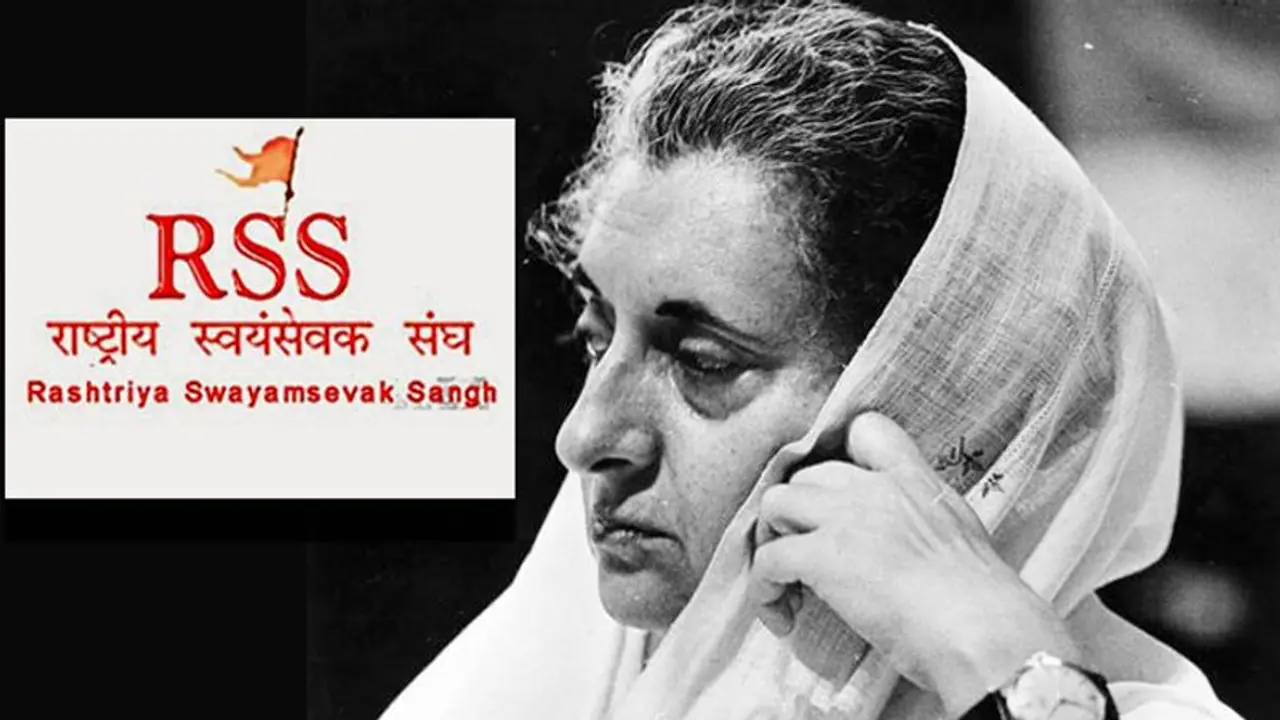We have travelled a long way since the declaration of the infamous Emergency. Thousands of incidents have been documented regarding the same. But, the services of one organization still remains unnoticed. It is the selfless sacrifices of the Rashtriya Swayamsevak Sangh
I have always believed that our history is biased. The events haven’t been written as factual evidence of truth. Rather, they are written to suit a certain narrative. The same applies to the Indian Emergency: the darkest period of our democracy. There are many books, articles, and journals written on this period, but none mention the role of the Rashtriya Swayamsevak Sangh in its fight to restore democracy. People always criticize the RSS, but no one takes the effort to realise its contributions. Their courage and heroism have always gone unnoticed: be it during the Partition or Emergency.
For Mrs Gandhi, RSS was always her main target. Do you know why? Because it was the RSS who had provided logistics to the movements in Gujarat and Bihar through its student organisations! She feared the RSS. So, even before the emergency was declared, she started planning the ban on RSS. It was in January of 1975 that Sidharth Shankar Ray had first presented a draft to Mrs Gandhi to ban the RSS. But much to her dismay, the draft was leaked in the media and she had to halt her plans. So, when she imposed the emergency, she used all her might to quash the RSS.
As soon as Mrs Gandhi declared Emergency, thousands of RSS leaders and cadres were arrested and put behind the bars. In fact, the then RSS chief Balasaheb Deoras was arrested and incarcerated in the Yerwada jail. Almost all jails around the country were packed with swayamsevaks. According to PG Sahasrabuddhe in his book The People versus Emergency: A Saga of Struggle, 23015 swayamsevaks were detained under the infamous Maintenance of Internal Security Act (MISA), of them, 22938 were male activists and 77 were female activists. When the Satyagraha movement by the RSS began, the number of RSS activists arrested doubled to 44965 while only 9655 people of other parties offered satyagraha. Even after all of this, she couldn’t deter the spirit of the RSS workers. In fact, she underestimated the strength and capacity of RSS. She had once admitted, “We were not able to capture even 10 percent of the RSS workers. They all have gone underground, and the RSS did not disperse even after the ban, on the contrary, it was striking the roots in new areas like Kerala”.
Also read: How the students of Gujarat altered the course of politics in India
RSS had defied the ban and walked down the path of Satyagraha. It is funny to note that the party who claims to be Gandhian and people who are his inheritance have been repressive and oppressive to the RSS, while they decided to follow the principles of Mahatma Gandhi in their fight to restore democracy. This is the time the Sangh Parivar came together. Thousands of swayamsevak joined the satyagraha, distributed anti-emergency literature and collected funds through household contribution to sustain the movement and the families of those who were jailed. People even housed many swayamsevaks as part of their families so that they aren’t arrested! Indeed, the people of India then saw the dedication and selfless service of the RSS.
The satyagraha was organized from November 14, 1975 to January 14, 1975. The demands of the swayamsevaks were simple; immediate restoration of democracy, lifting the press censorship and immediate release of all the swayamsevaks who have been unjustly put behind bars. In his book, PG Sahasrabuddhe also mentioned that over one and a half lakh people joined in this satyagraha. Of them over 80000 were swayamsevaks. Can you imagine that? To crush this movement, Mrs Gandhi arrested 44965 swayamsevaks, which included 2424 women as well. Lest we forget, 87 swayamsevaks lost their lives in this fight to restore our democracy!
The atrocities committed by the government during Emergency is well documented in the Shah Commission report which magically got lost when Mrs Gandhi came back to power. The report was divided into 26 chapters and three appendices and contained around 530 pages. The sheer size of the report will tell you of the enormity of violence committed by the then government. From midnight knocks and arbitrary arrests; censorship of the press; premature retirement or supersession of inconvenient officers, including members of the higher judiciary; bulldozing of the slums; and forced sterilisation of men, everything was captured in this report. Era Sezhiyan ensured that the report is found and published for all to see what happened during the Emergency!
No, the RSS did not agree to the conditional lifting of the ban which was offered by Mrs Gandhi. For the RSS, this fight to restore democracy was something they are bound by, through their oath: service to the nation. So, how could they agree to something that would only serve their self-interest and ignore the millions of their brothers and sisters? To them, the fight against the fascist regime of Mrs. Gandhi was their natural duty. They wanted to restore India back to its original glory!
The swayamsevaks displayed utmost national consciousness coupled with unwavering devotion to their duty of selfless service to the nation at an extremely critical juncture of Independent India. They defended the freedom and democracy of India. But history yet remains ever so thankless to them! Isn’t it time now to re-write our history the way it should be written?
